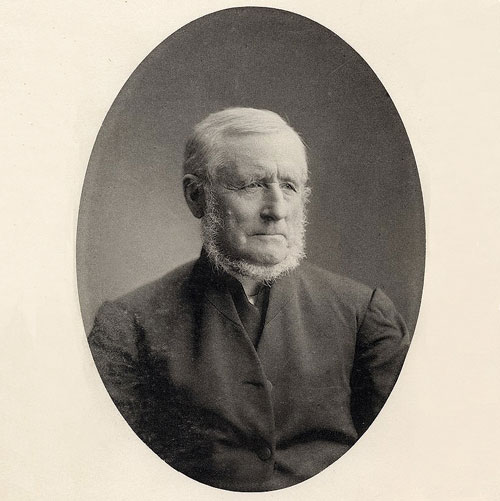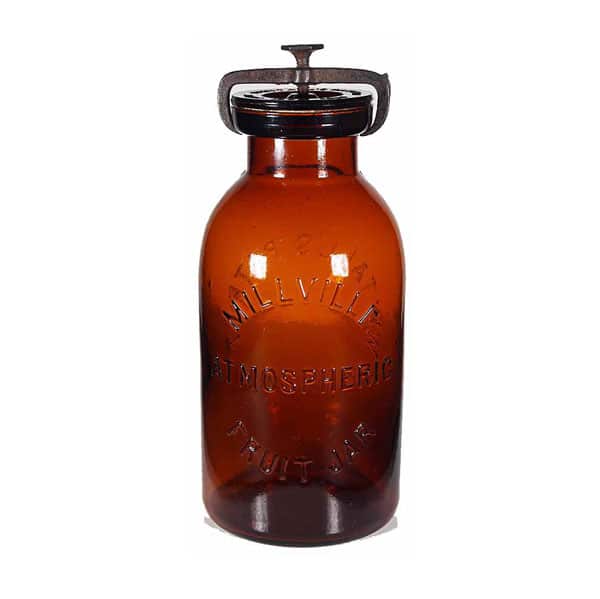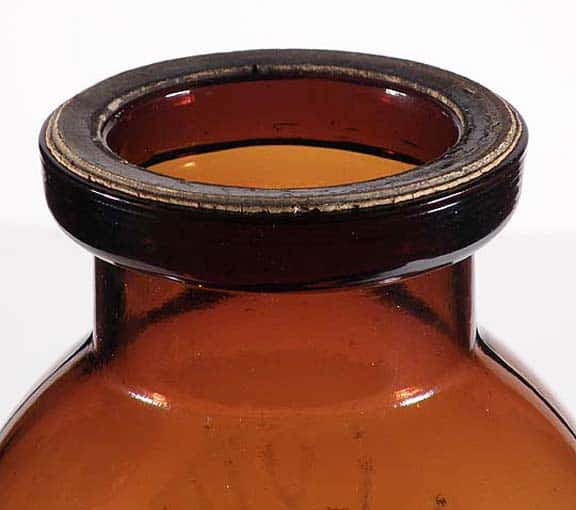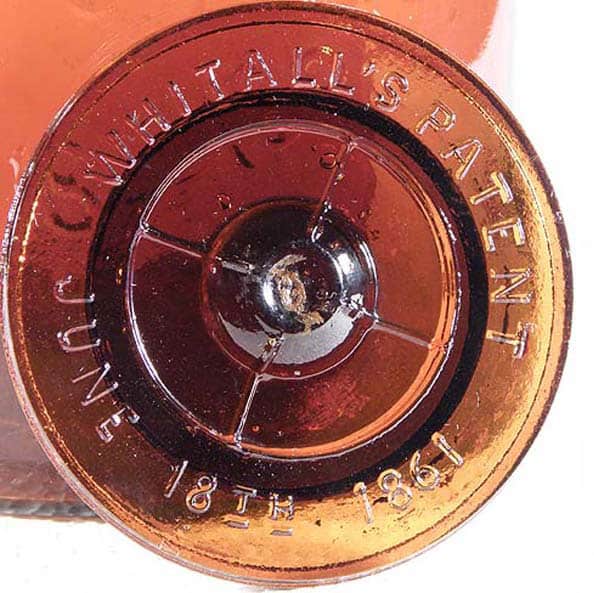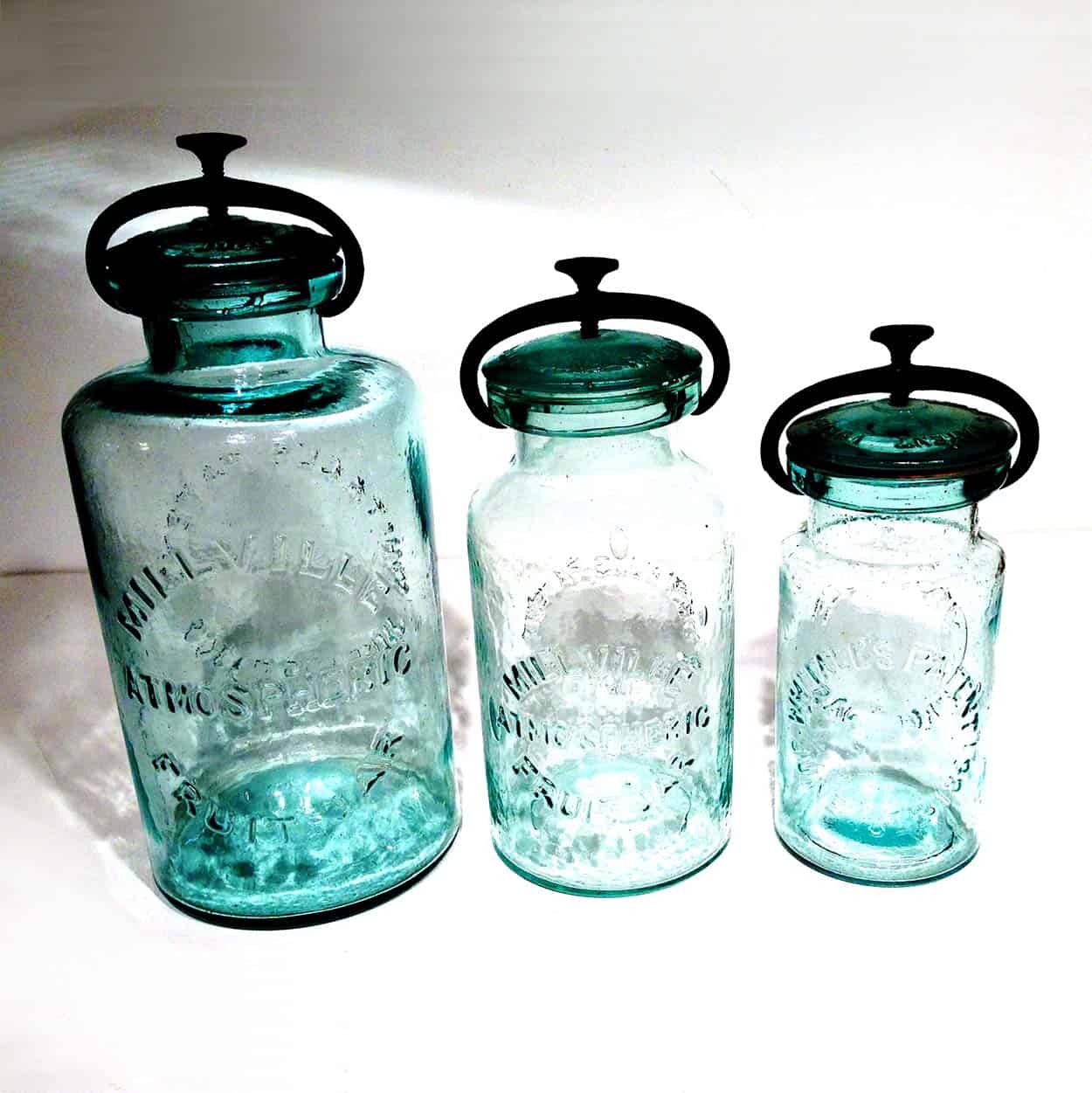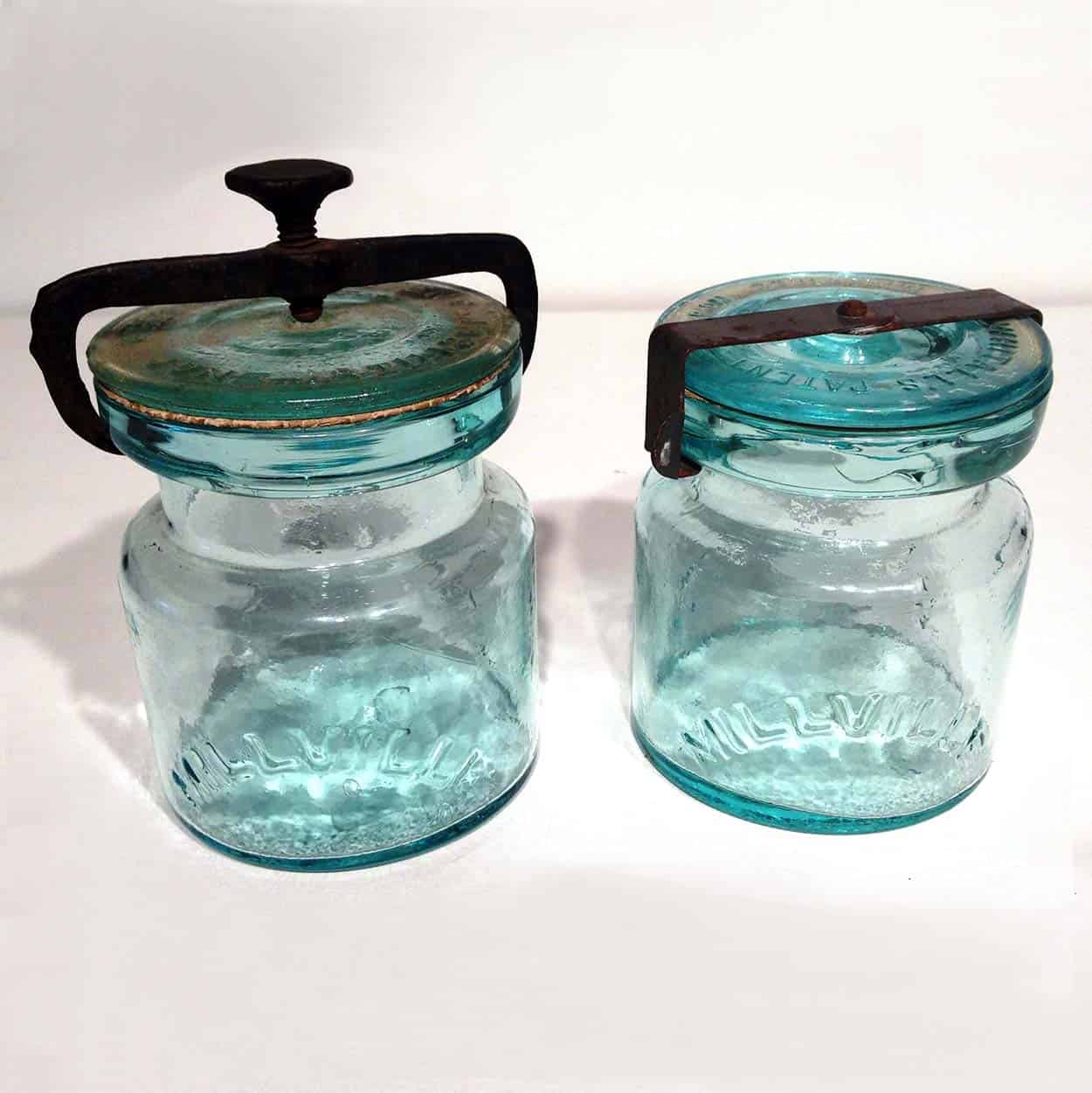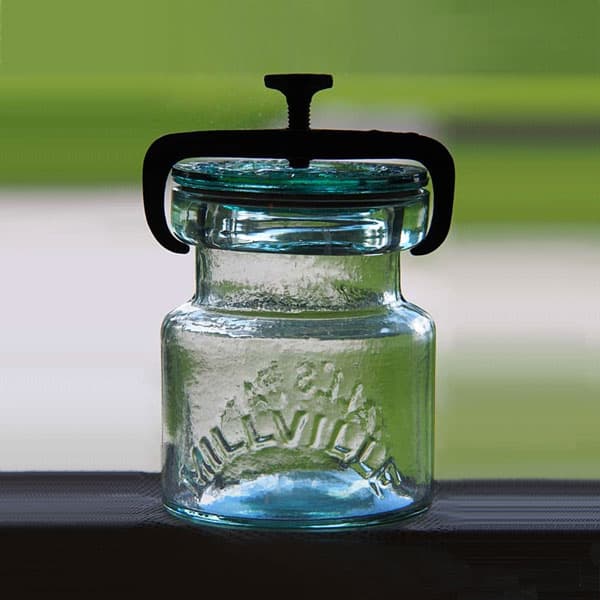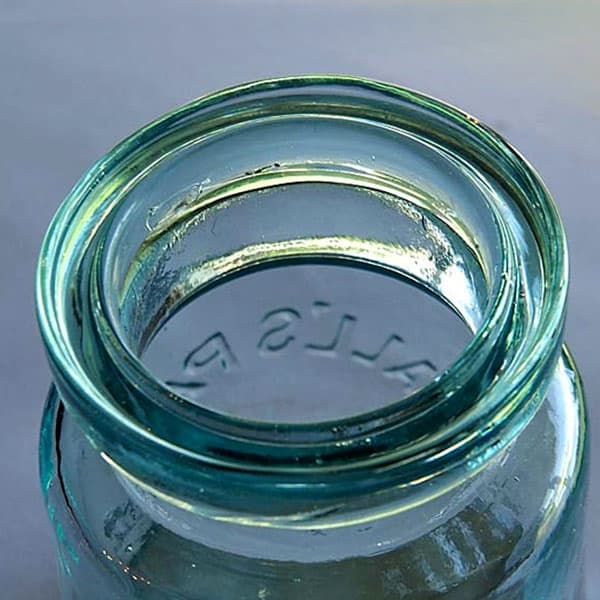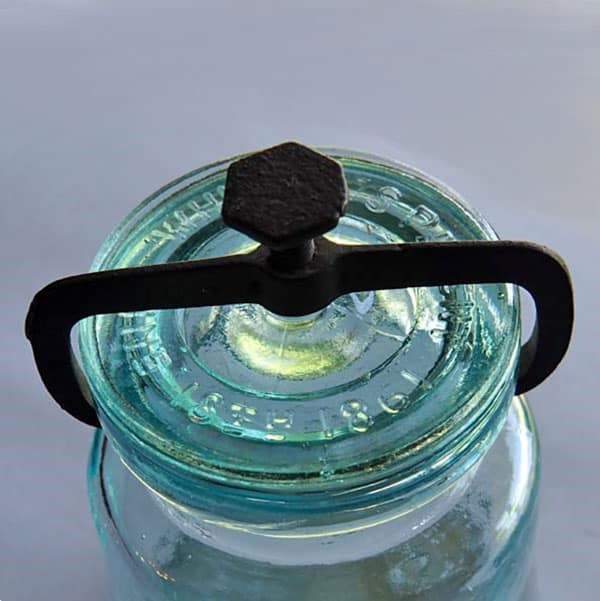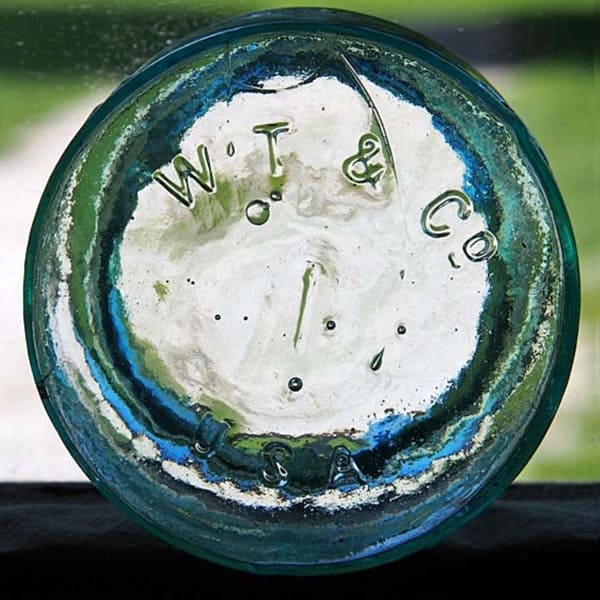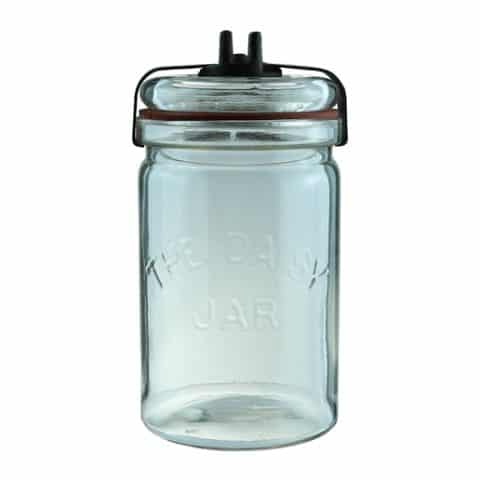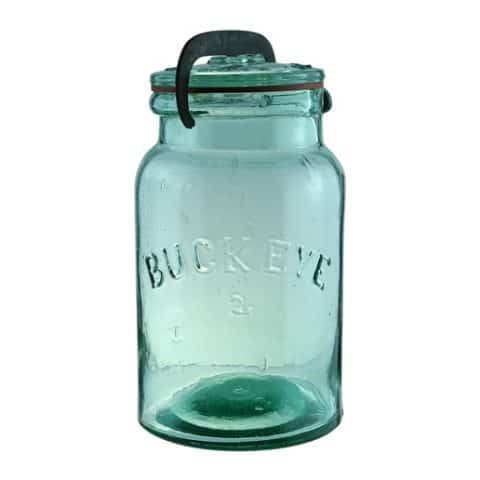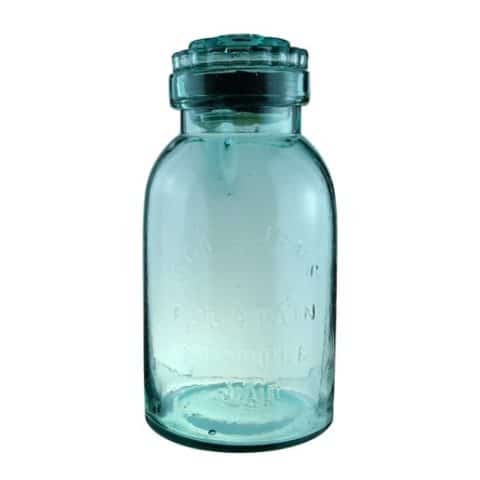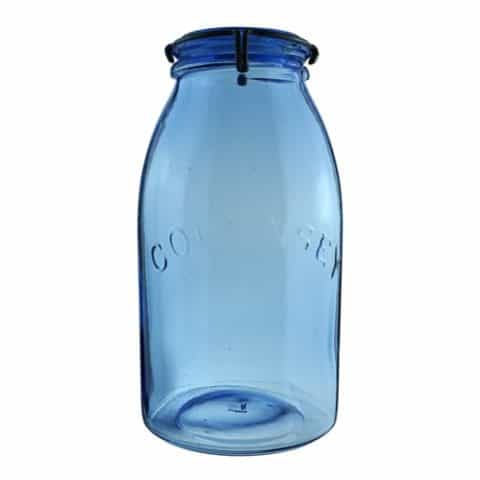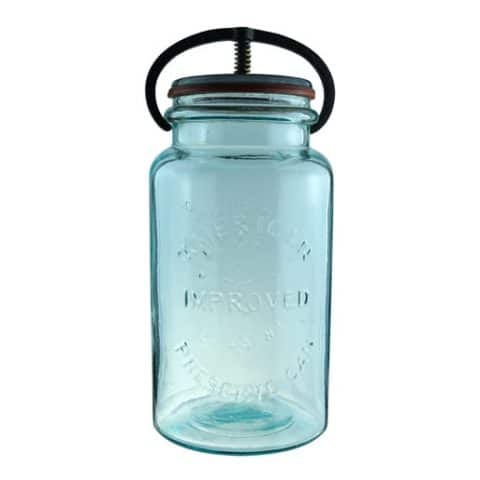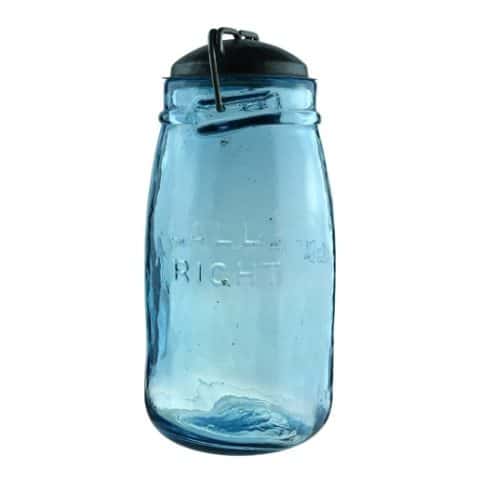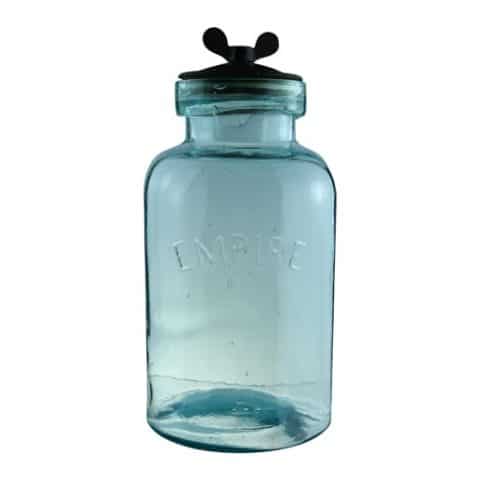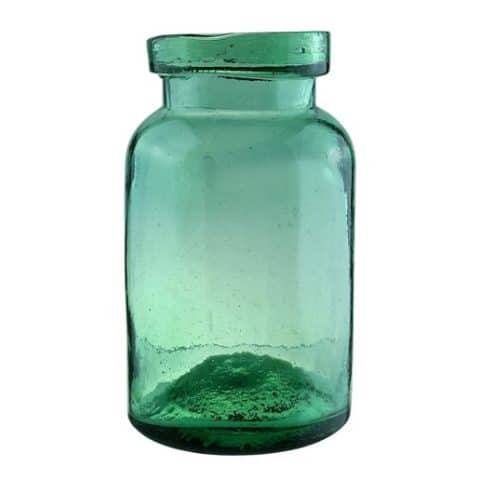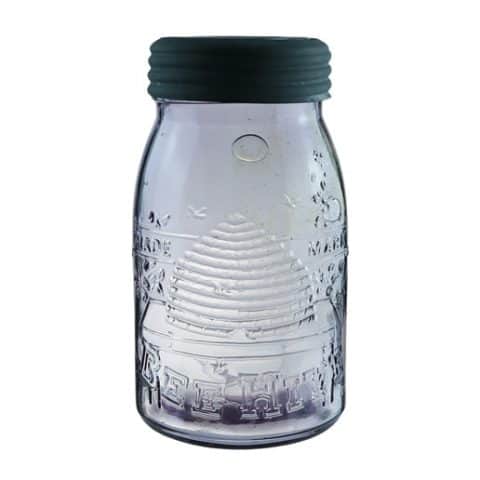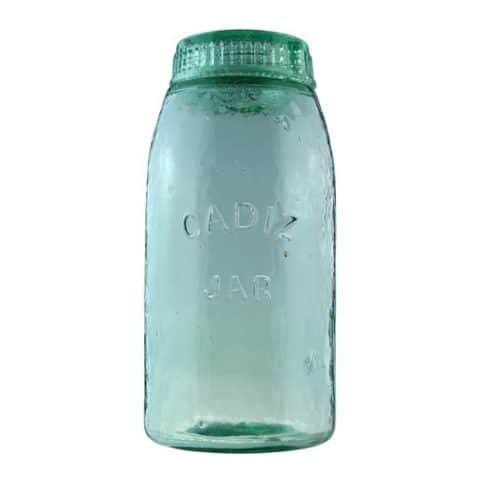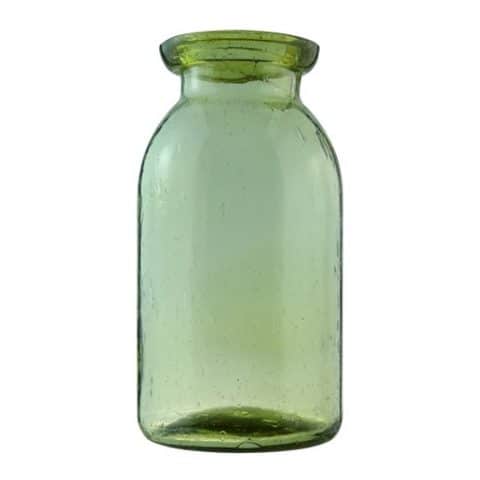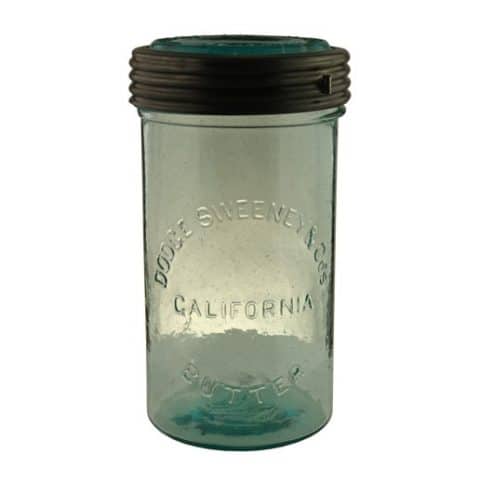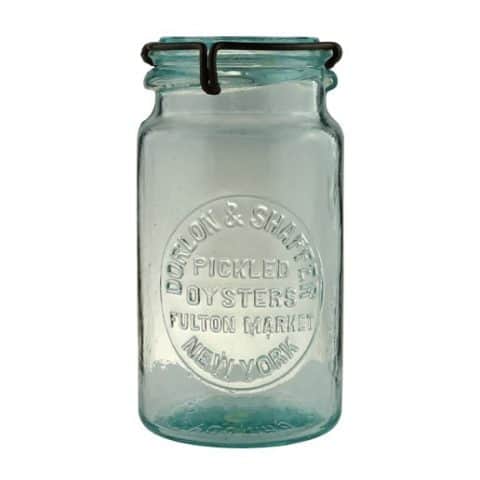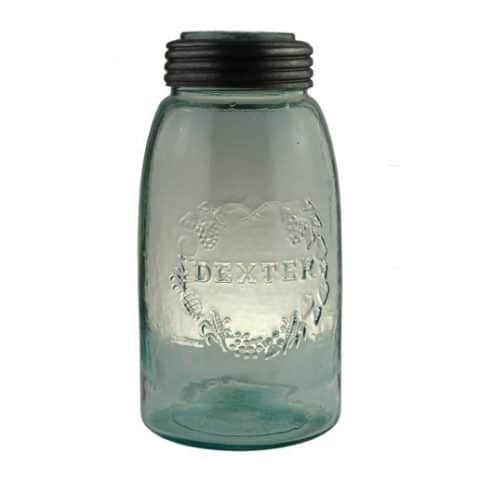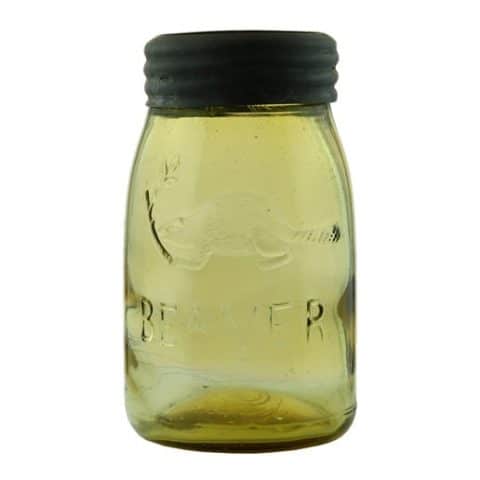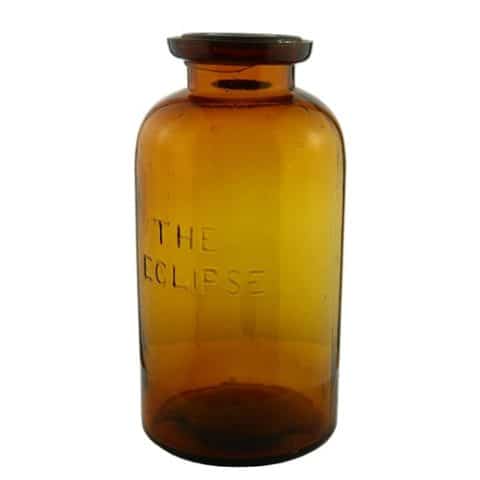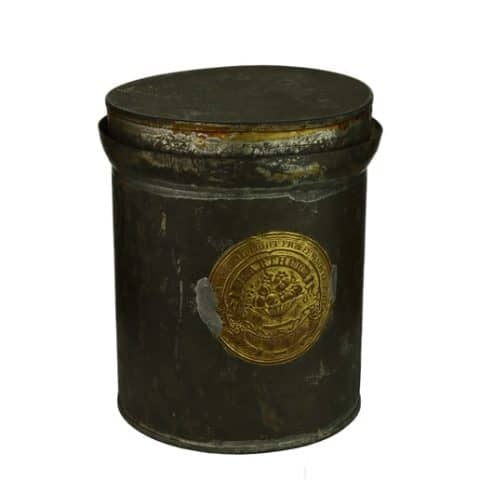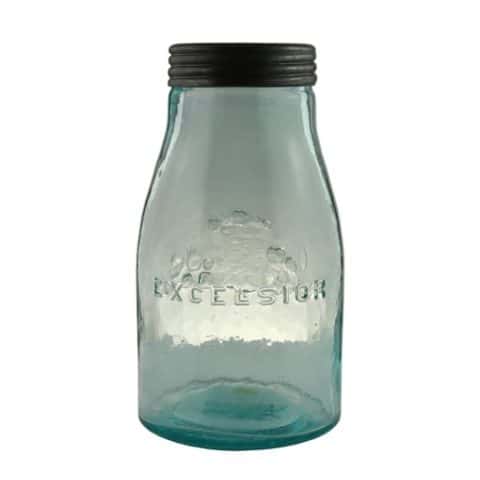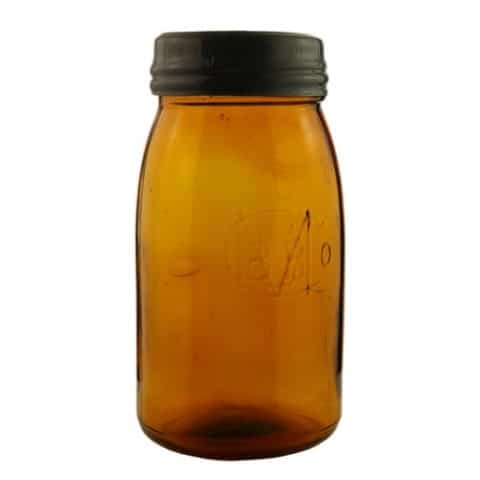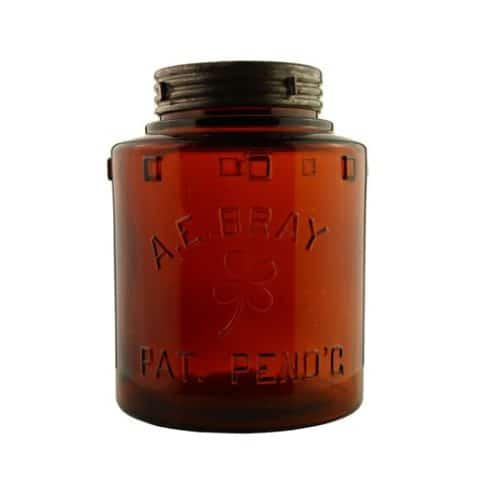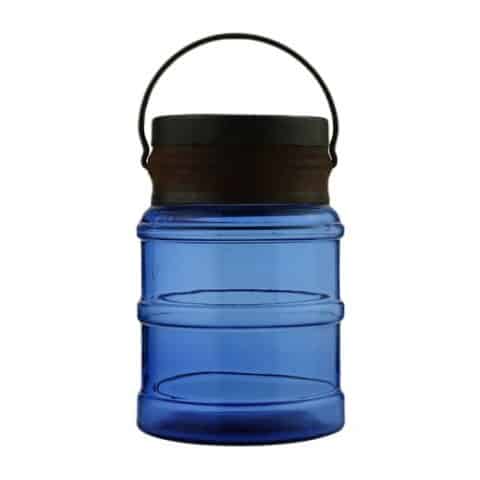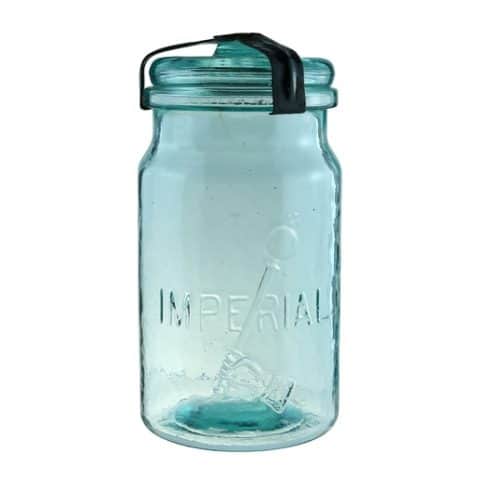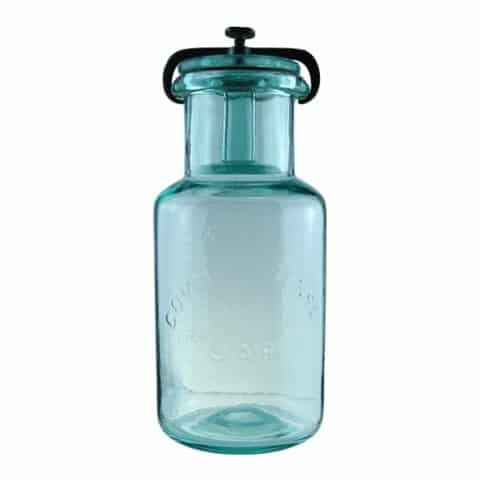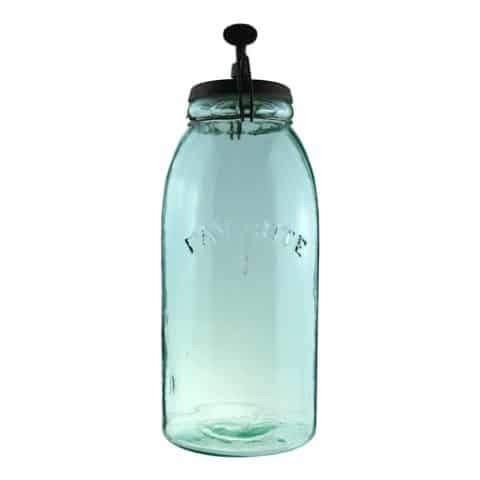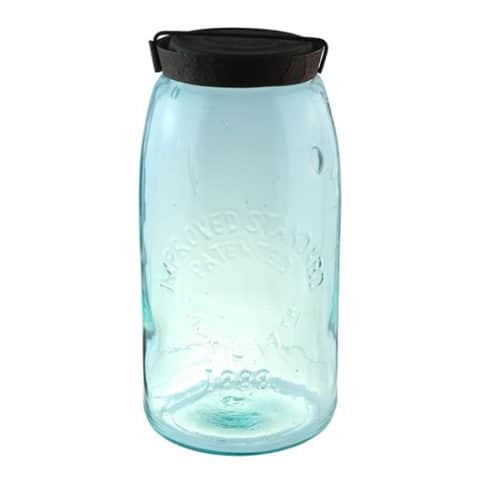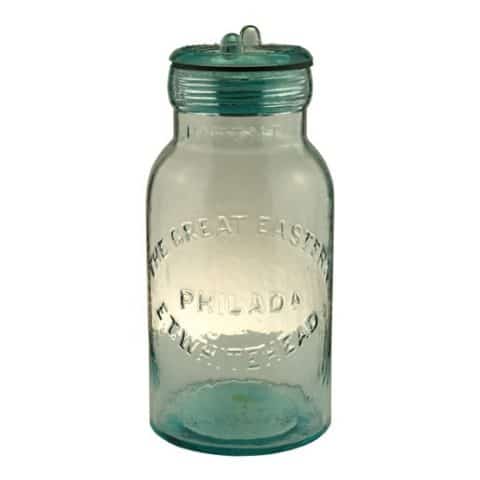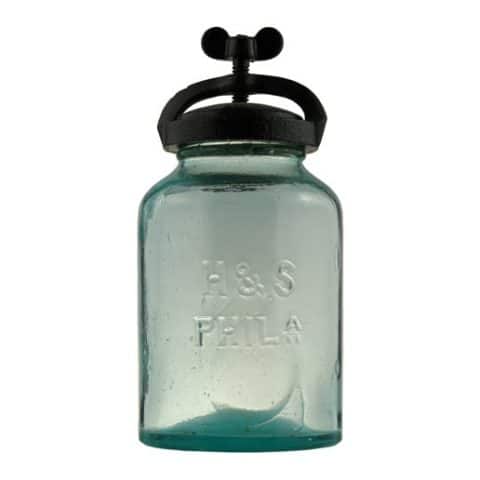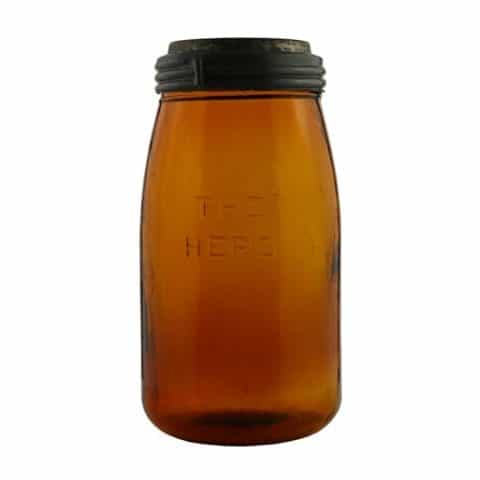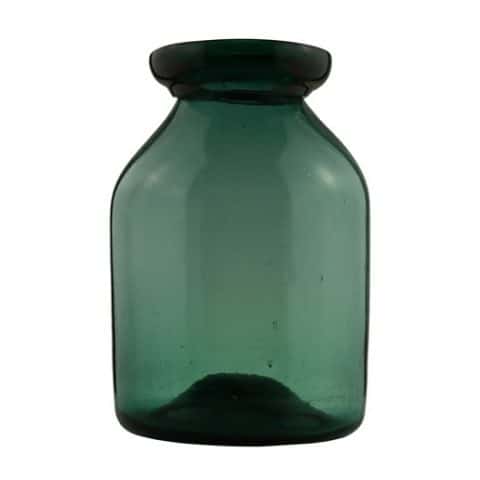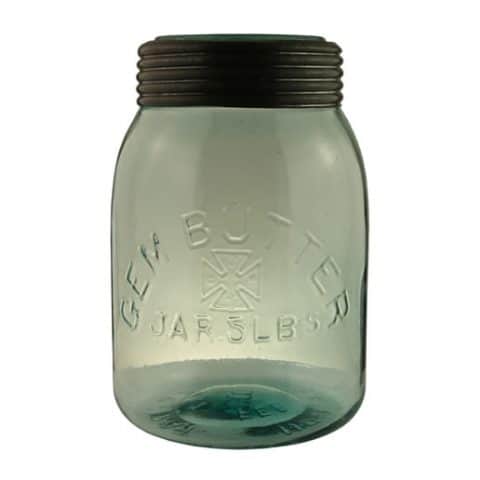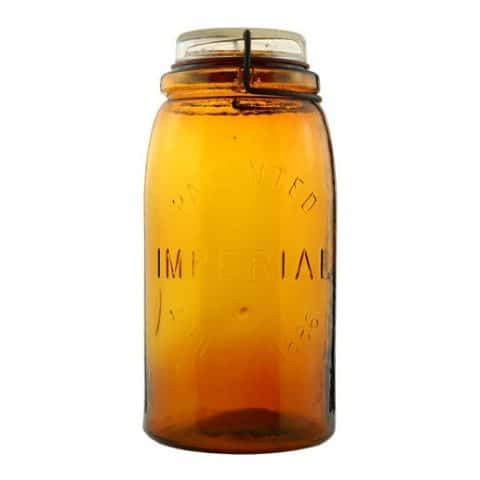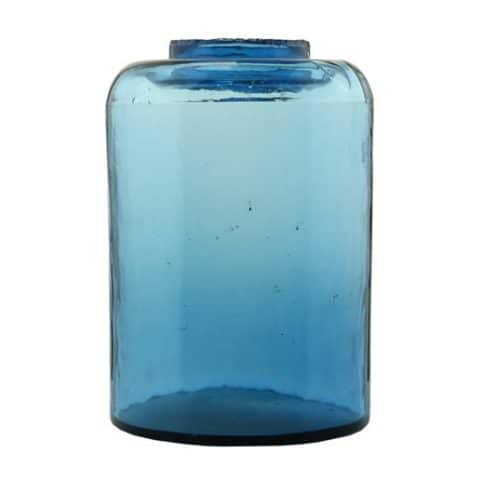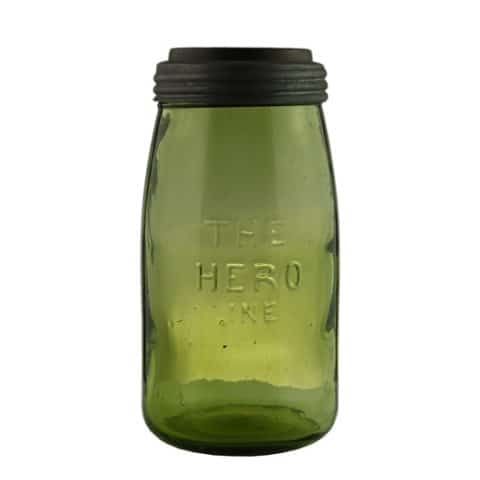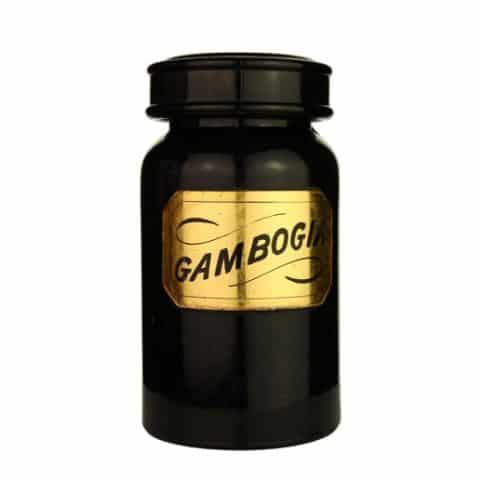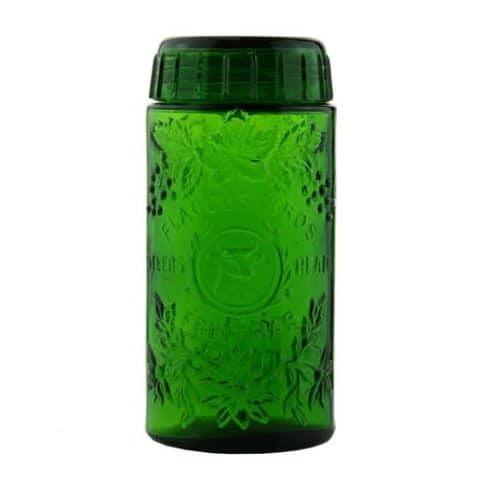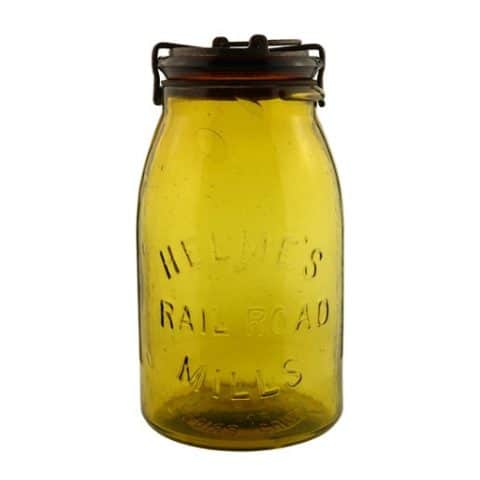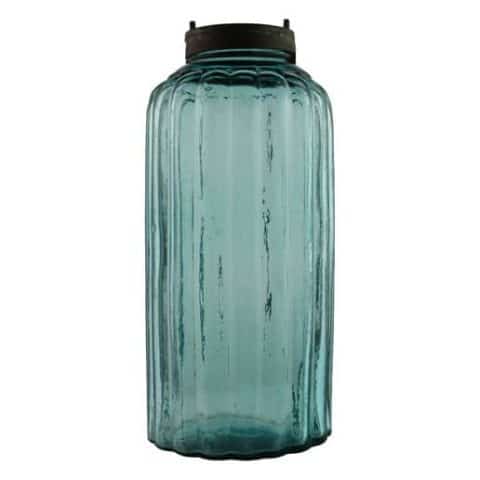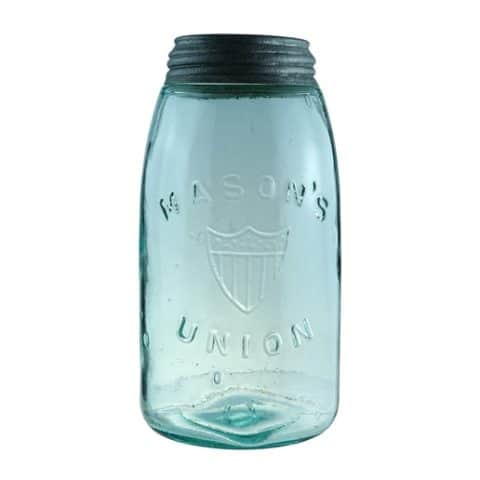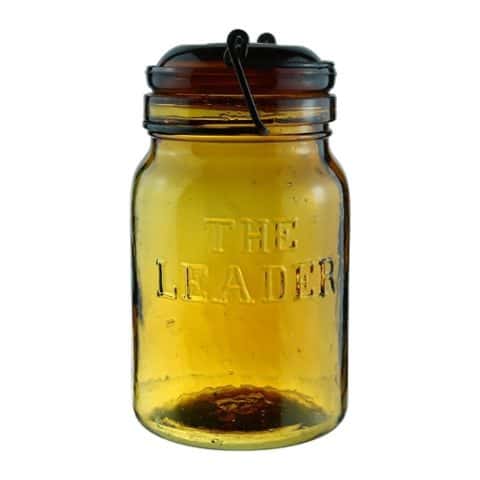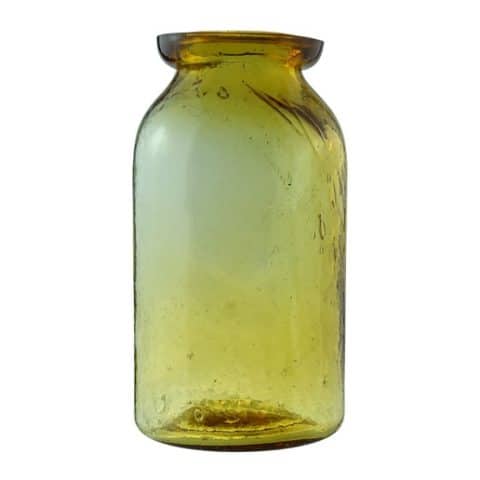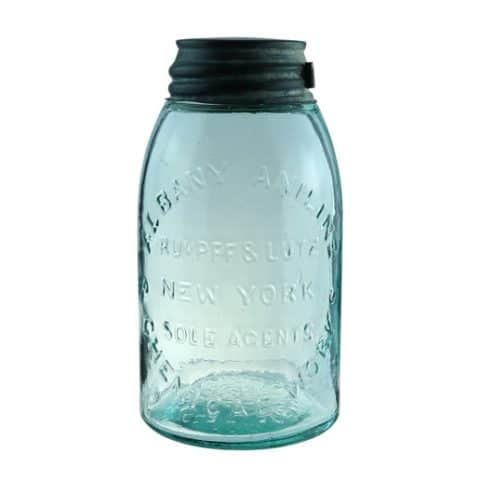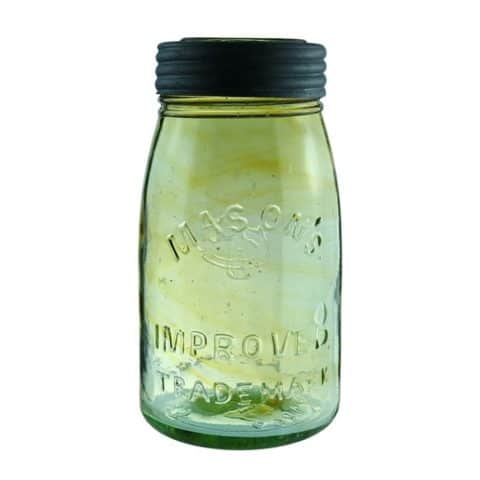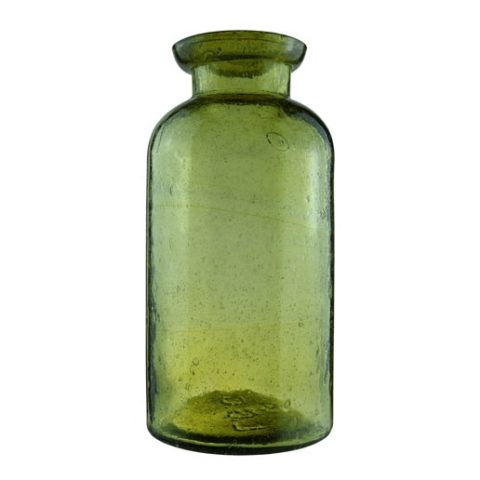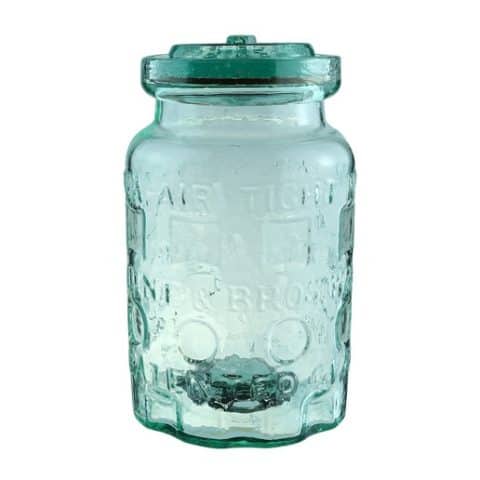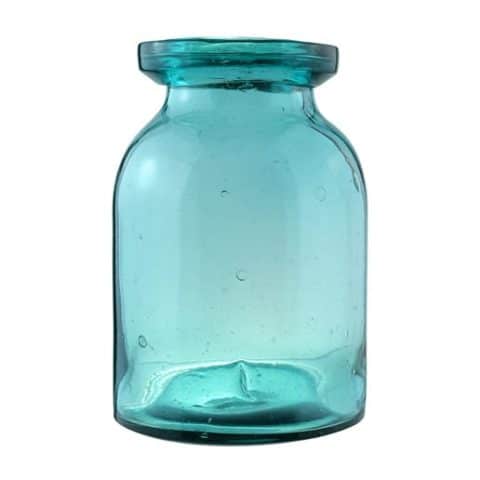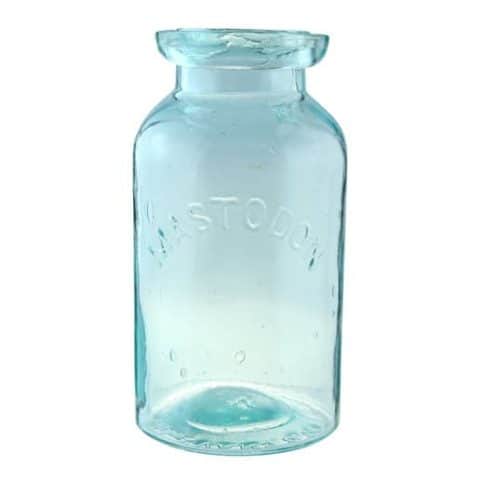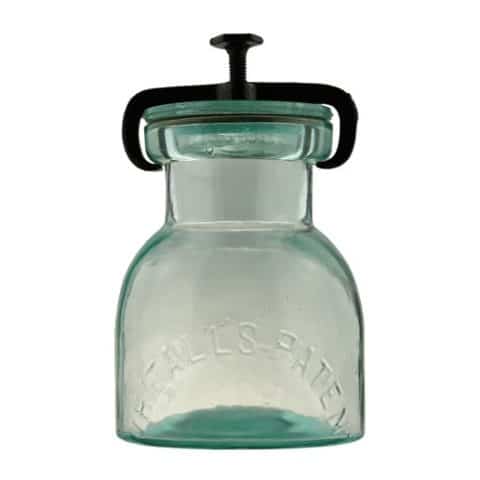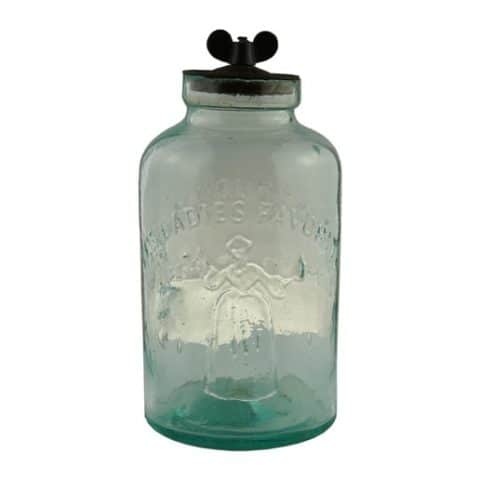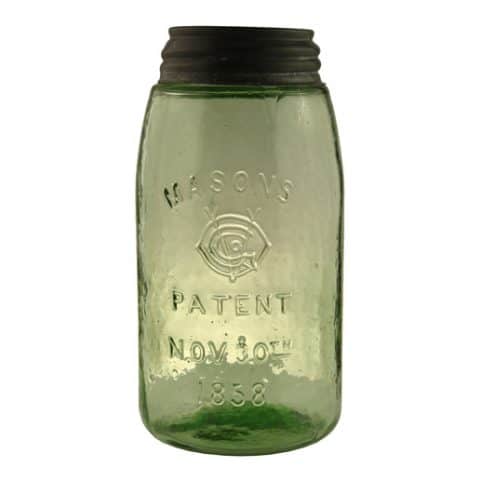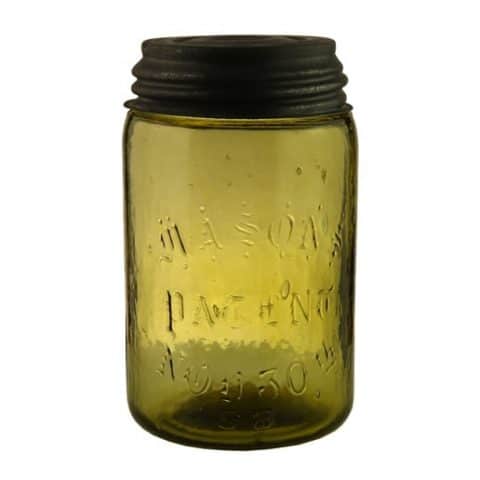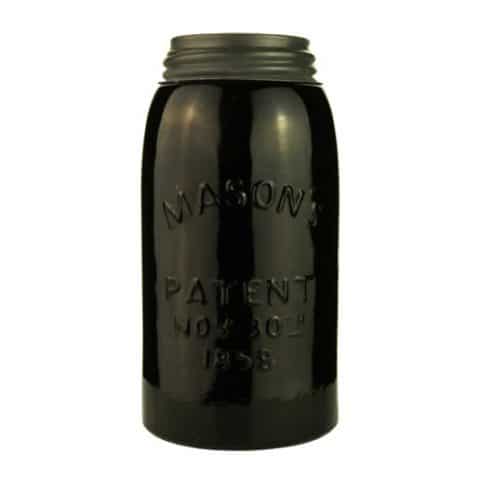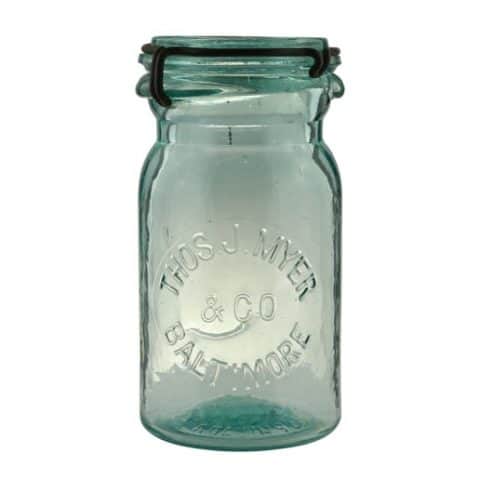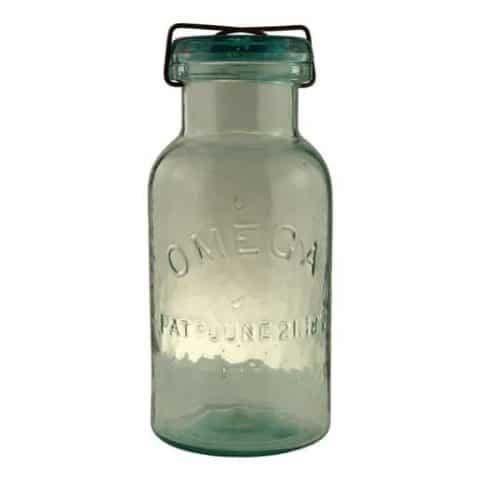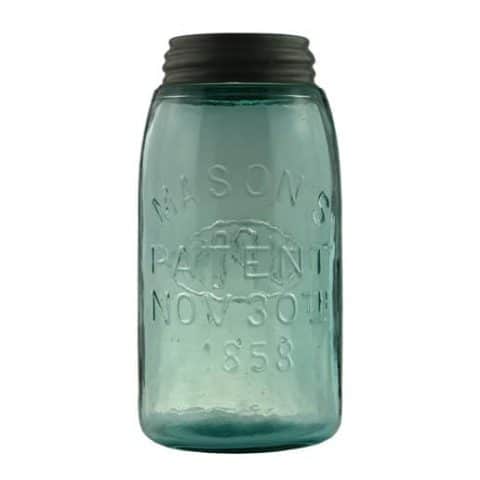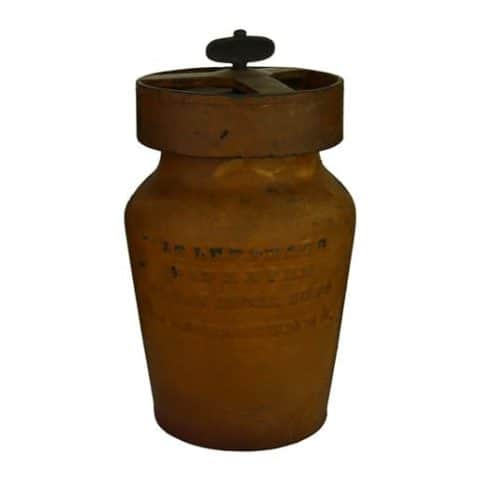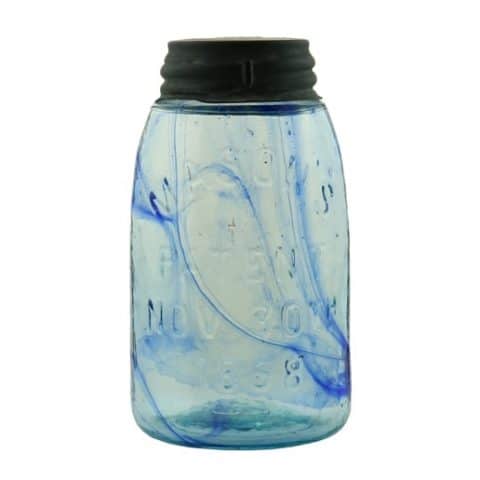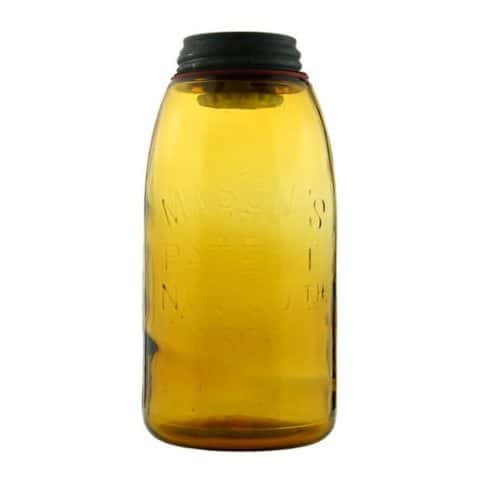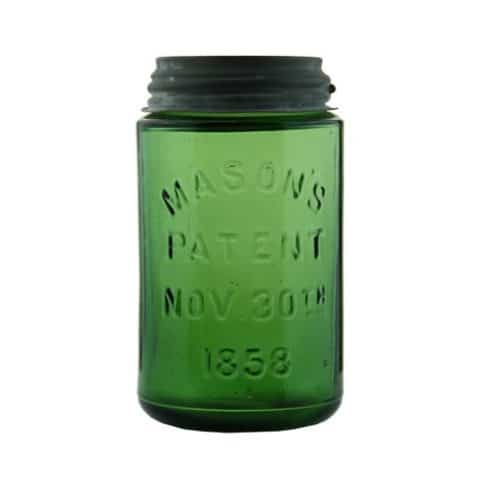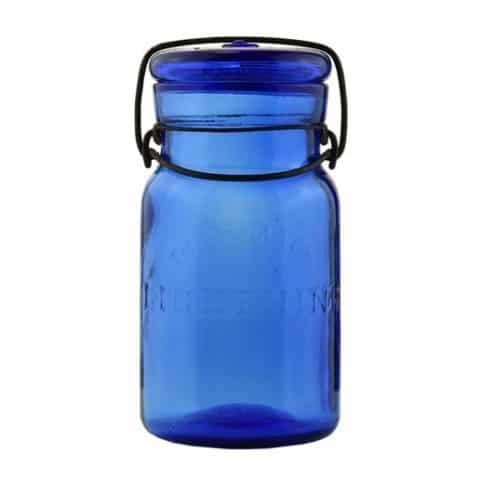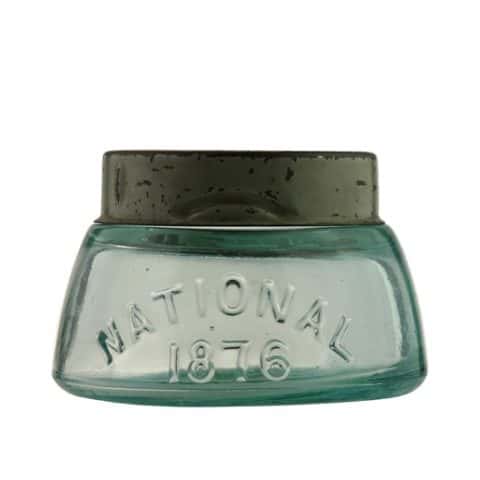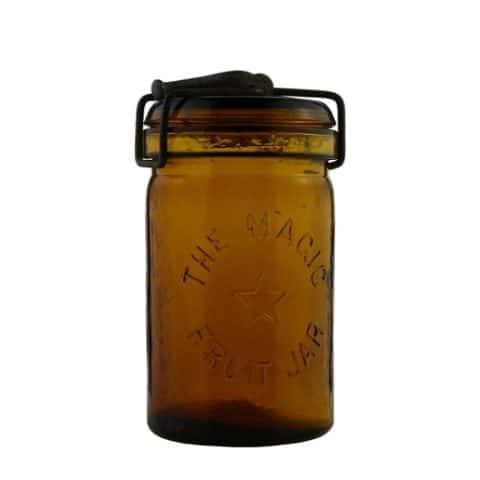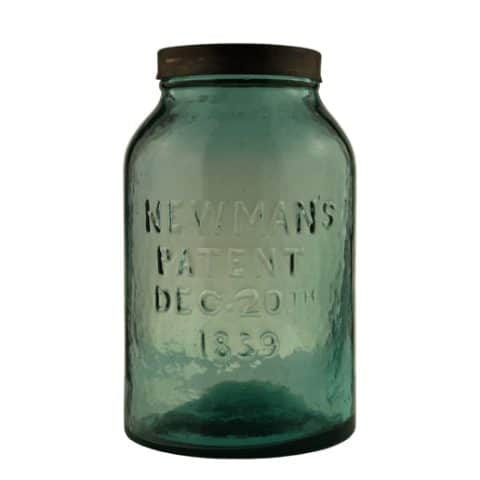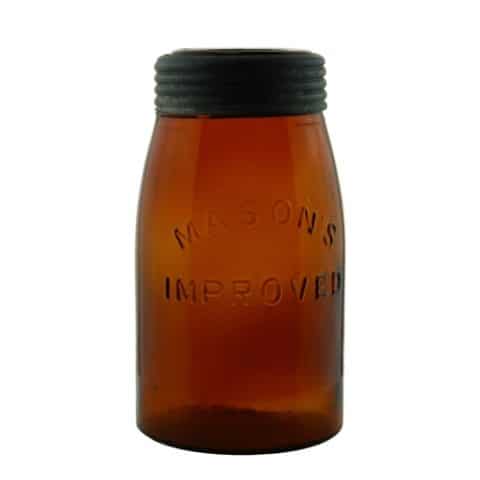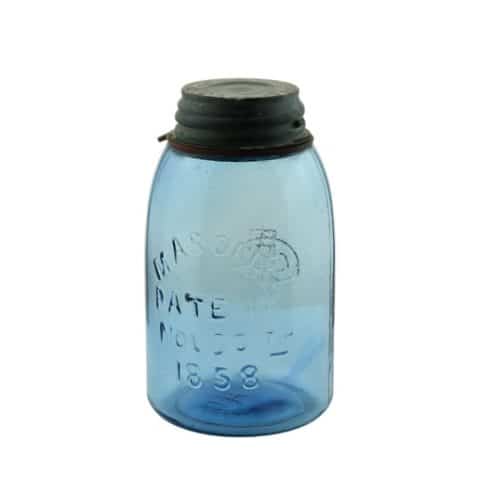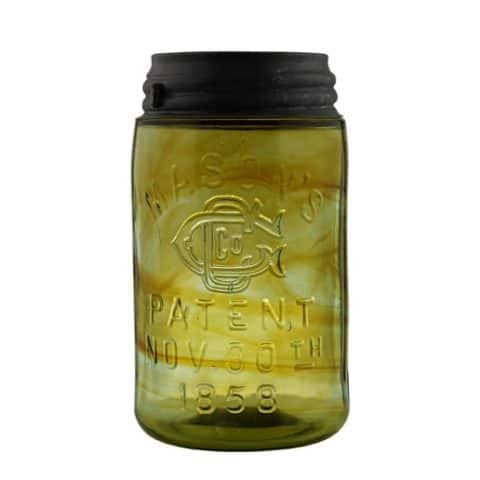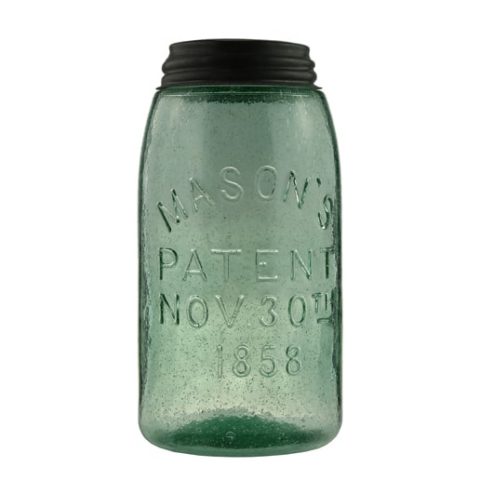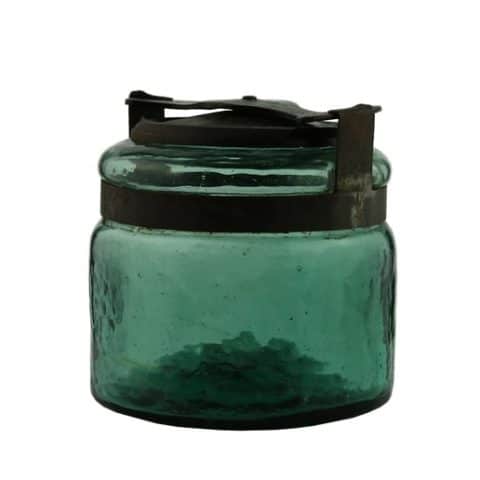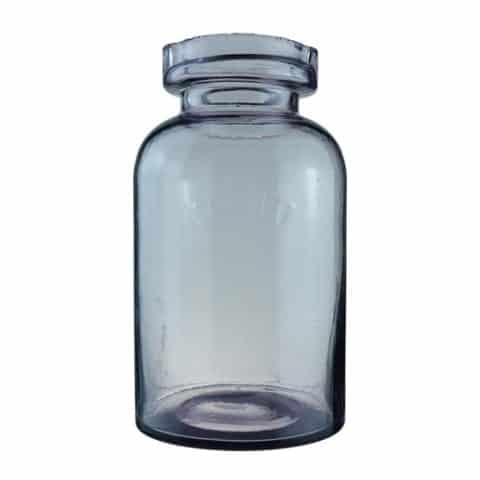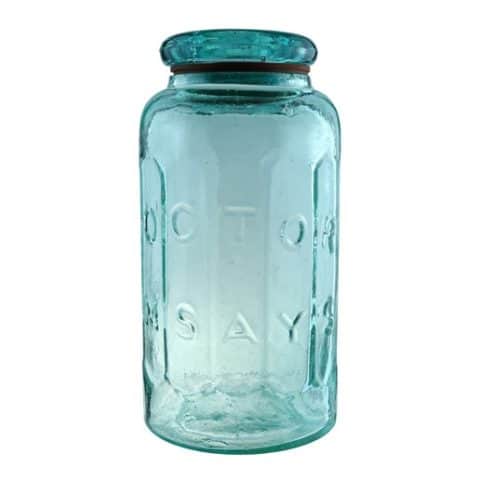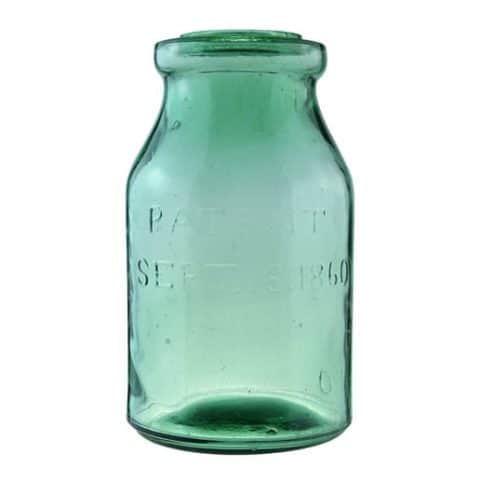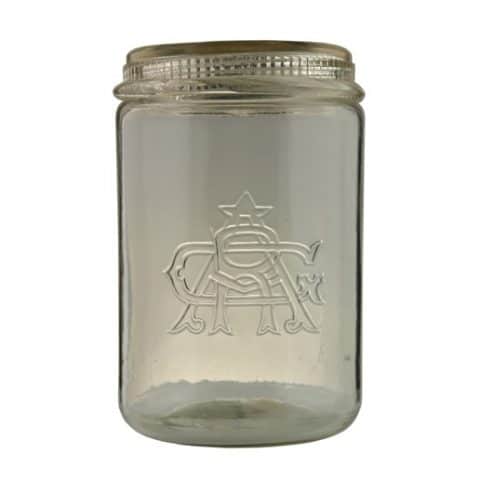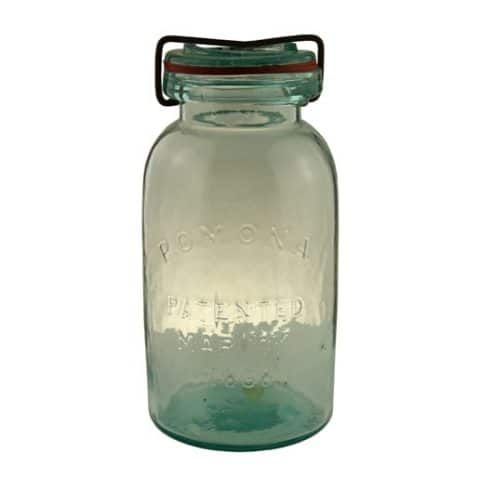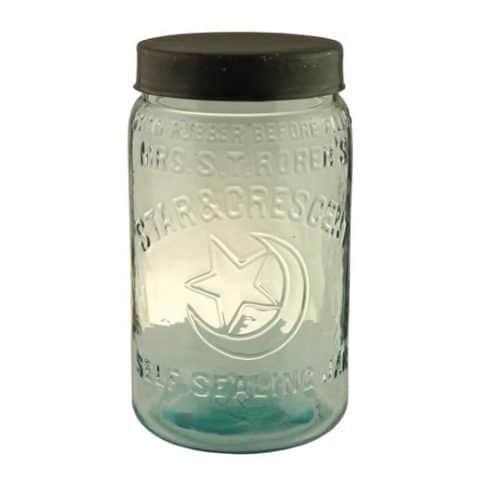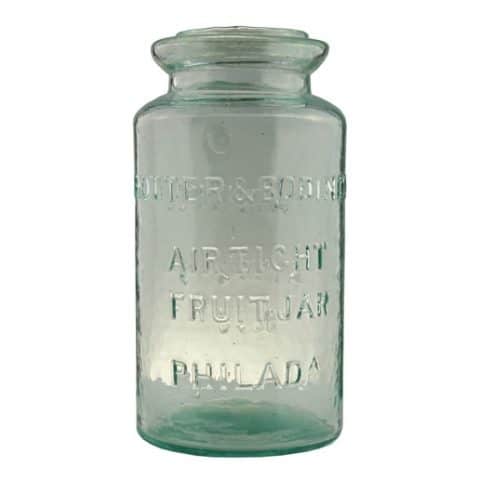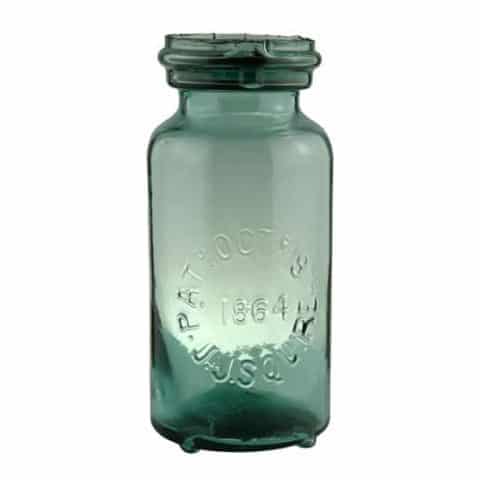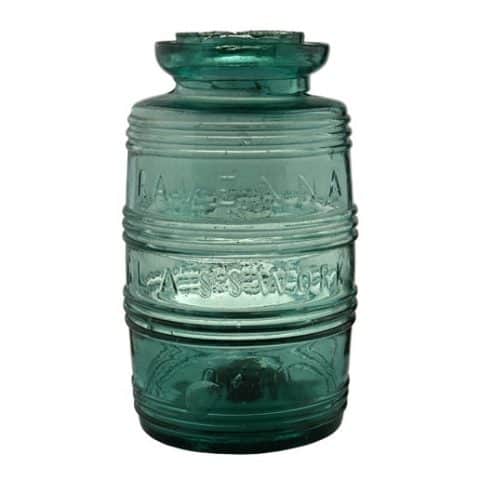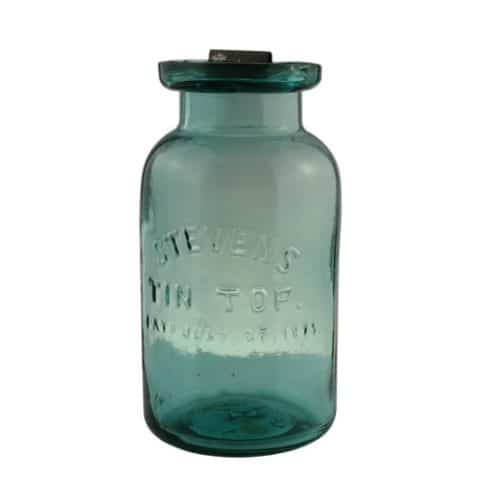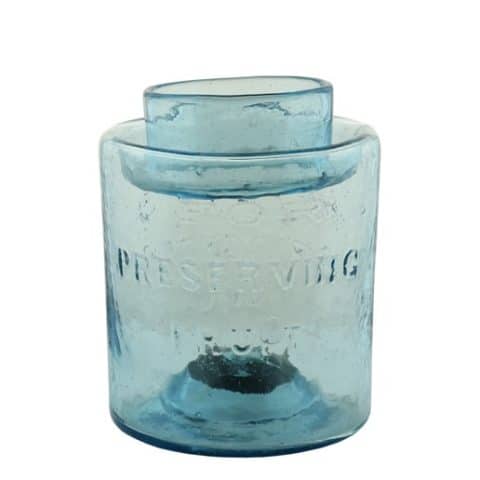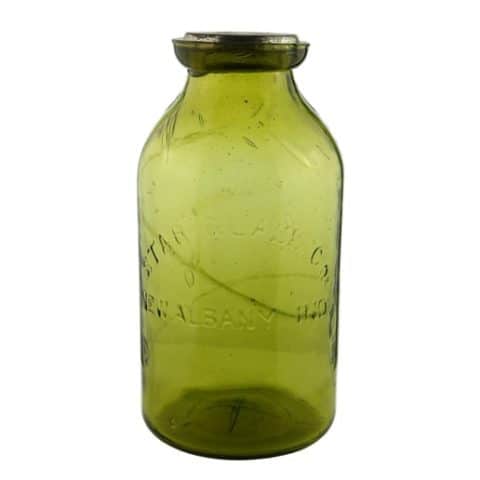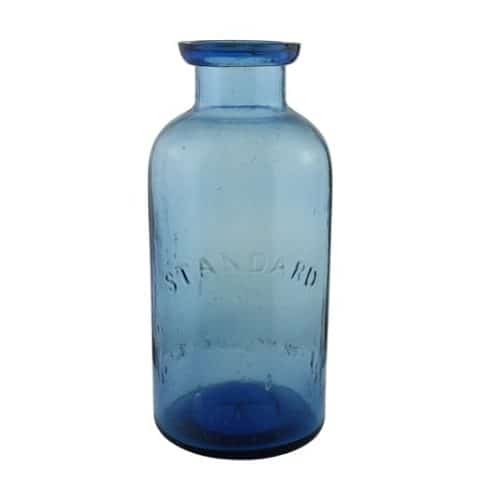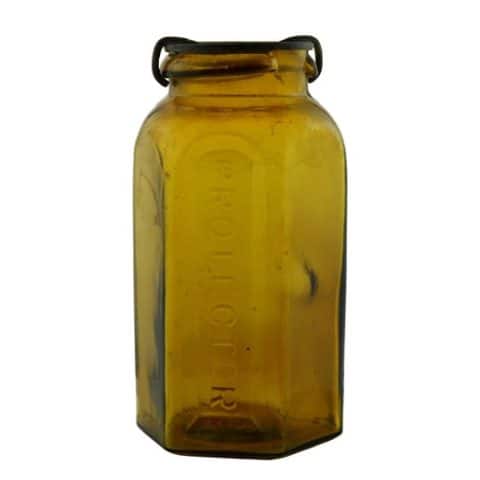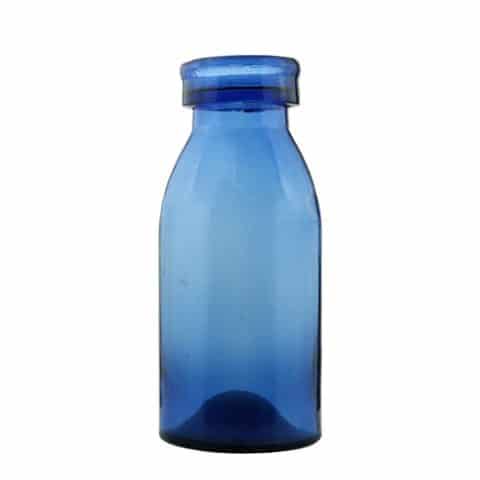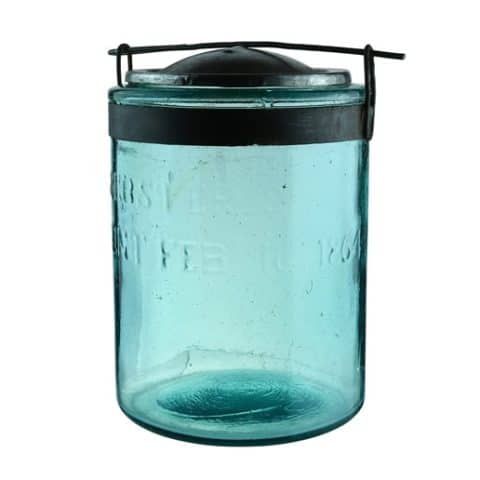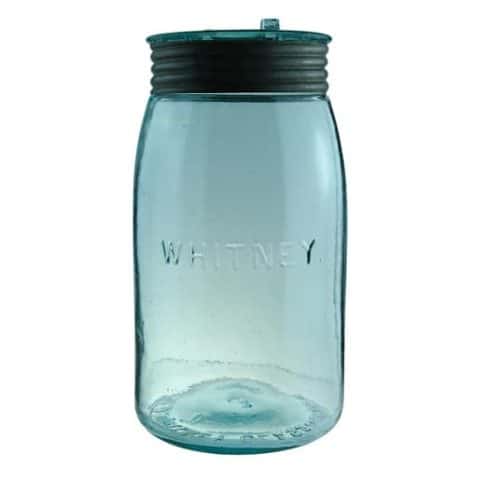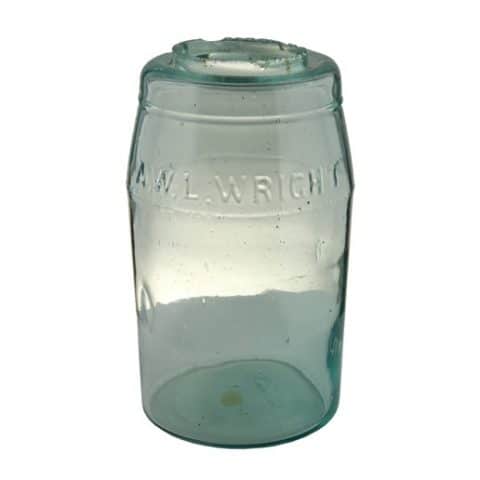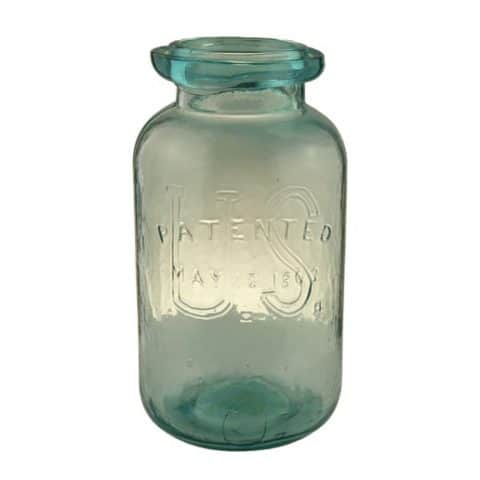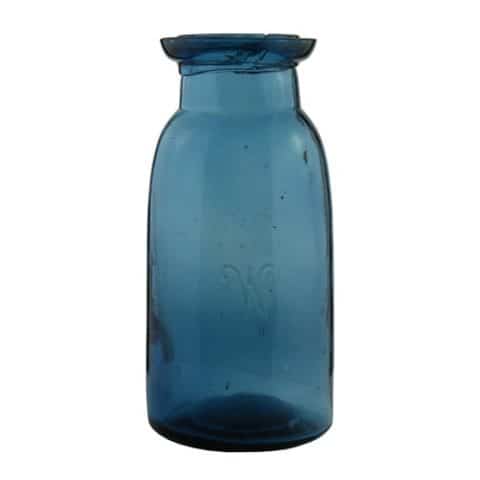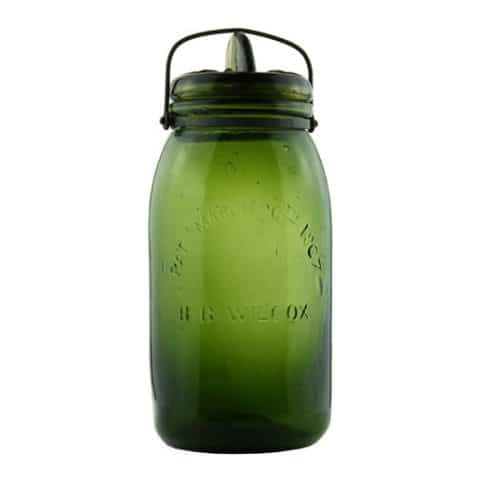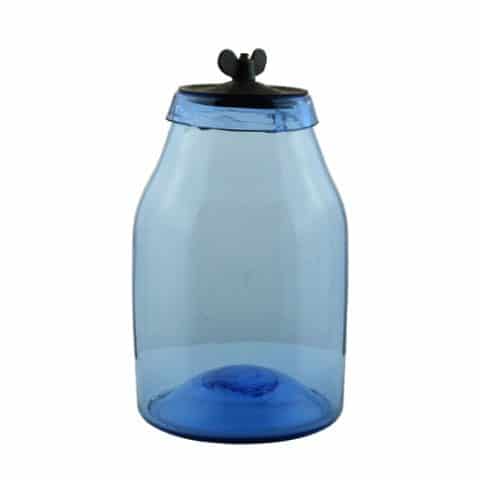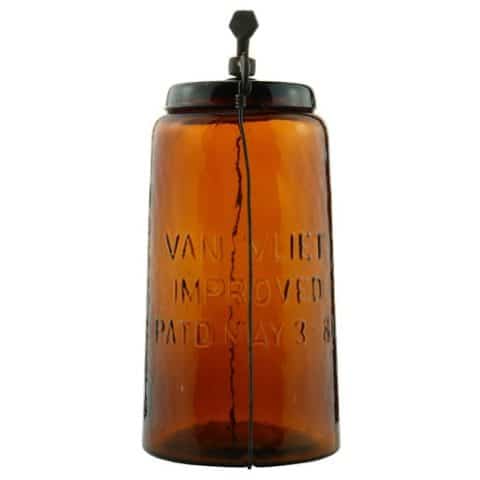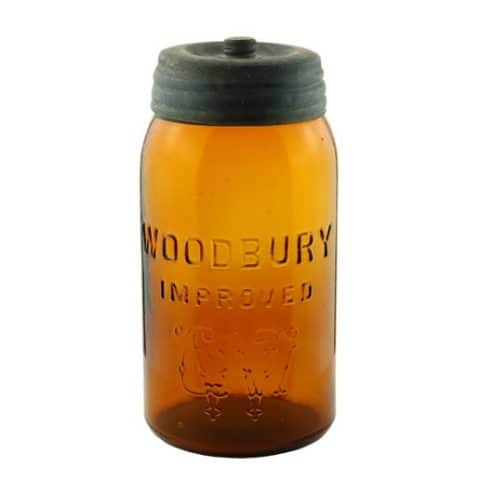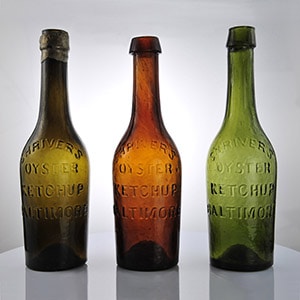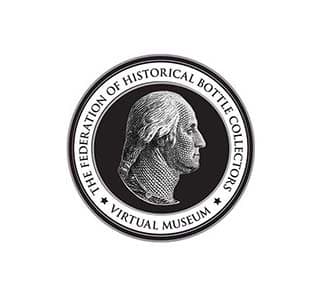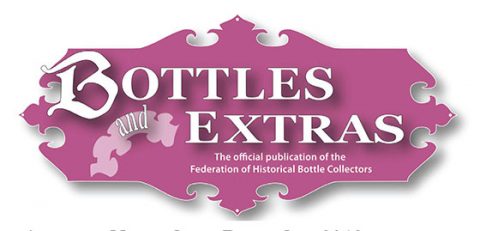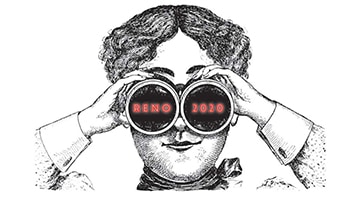Millville Atmospheric Fruit Jar
Millville Atmospheric Fruit Jar
Whitall’s Patent June 18th 1861
John M. Whitall, Philadelphia, Pennsylvania
Cobalt Blue Quart
Provenance: Darrell Plank Collection
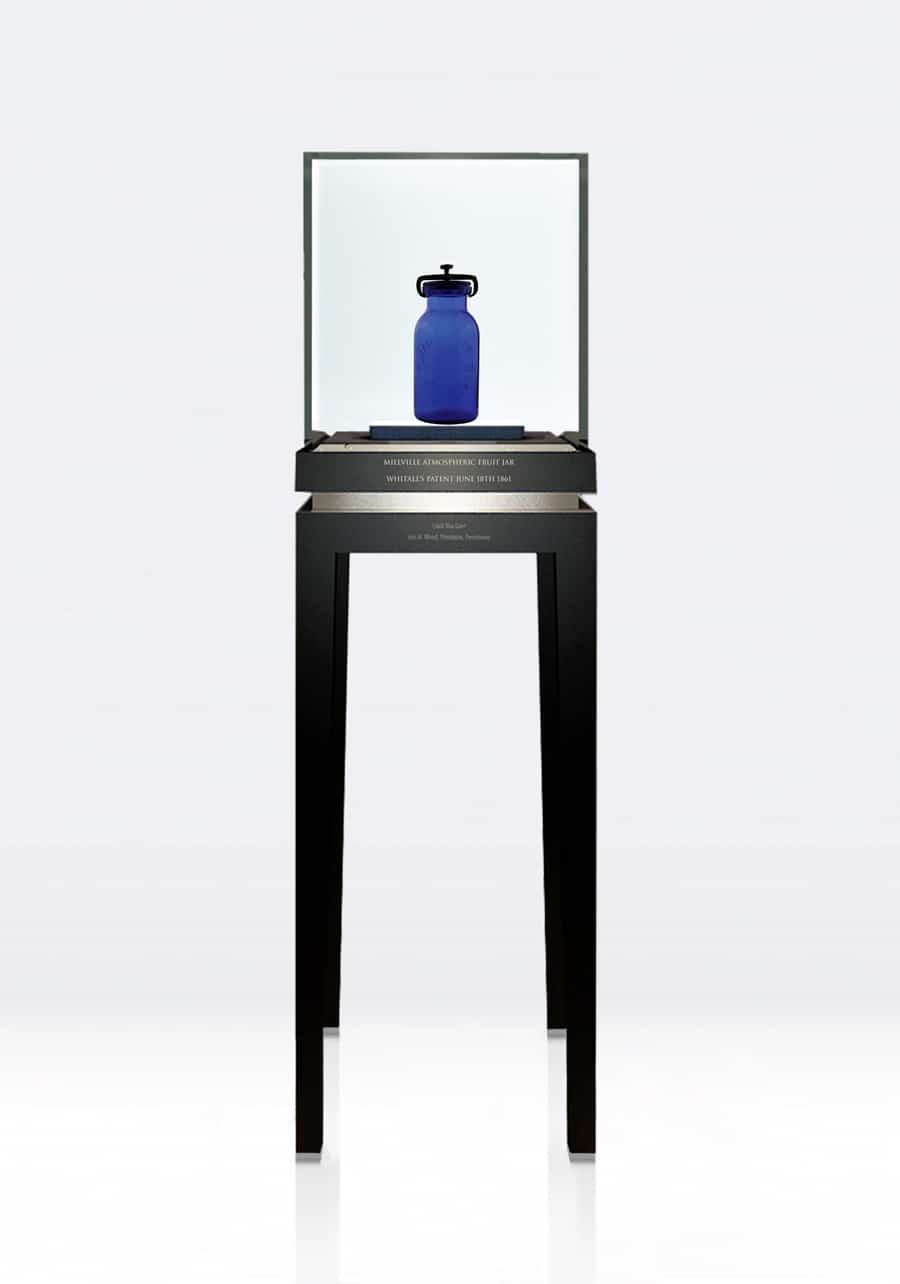
The Millville Atmospheric Fruit Jars are one of the most popular jars to collect. The vessels come in a number of aquamarine glass molds, lid variants, embossings, and sizes and are admired with their pronounced cast-iron yoke clamp and thumbscrew closure device.
There is also the intriguing “MILLVILLE ATMOSPHERIC FRUIT JAR” name, and on the reverse, embossing noting the maker of the jar “WHITALL” and the patent date, “JUNE 18th 1861.” This is quite a bit of embossed information compared to most embossed glass jars. The earliest jars, like our museum example, were made from 1861 to 1880s by Whitall, Tatum & Company of New York, N.Y., Philadelphia, Pennsylvania, and Millville, New Jersey.
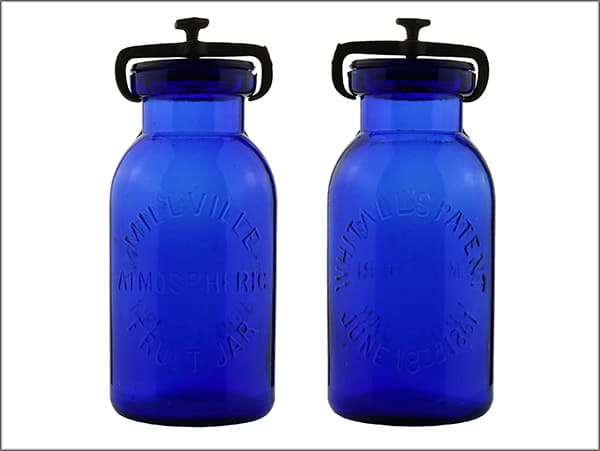
With what is said above, we now present our Millville Atmospheric example in cobalt blue glass. This quart-size jar is a real eye-catcher and a standout in our museum Jar Gallery that includes many spectacular specimens. Like most of the cobalt jars, there is speculation that the jars were originally a special order for medical purposes.
See other Virtual Museum examples of cobalt blue jars. Trade Mark Lightning, Mason’s Improved CFJCo – Clyde New York and Mason’s Patent 1858 jars.
The Millville Atmospheric Fruit Jar was probably the most popular of the few jars using a thumbscrew and stopper-lid type of closure. This closure type was not as popular as the screw thread cap or even the Lightning-type jars but did gain some acceptance and widespread use primarily from the 1860s to the 1880s.
Jars with a sharply rounded shoulder, domed lid, and curved clamp are probably older than the slope-shouldered, flat lid and flat clamp jars more commonly found. The patent drawing showed a jar with a sharply rounded shoulder and domed lid. There are a number of variations of the jar.
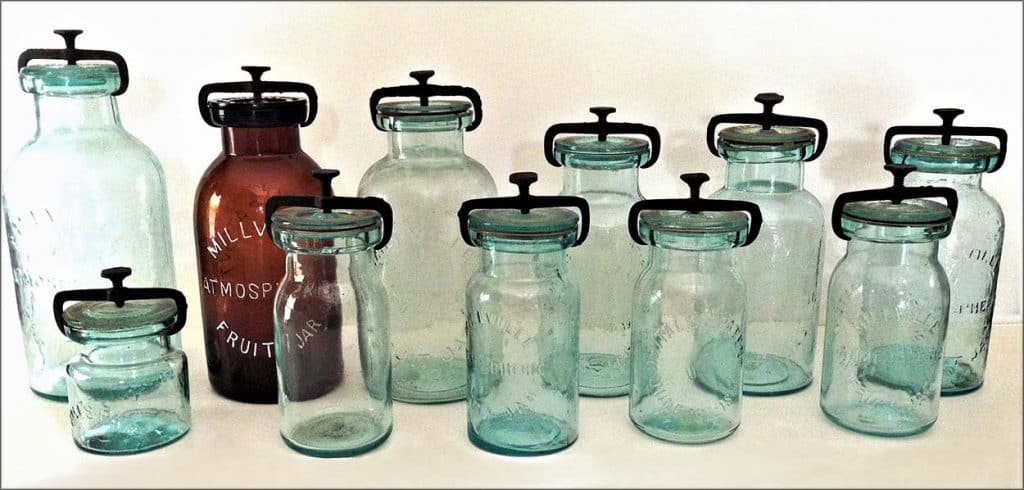
John M. Whitall was granted a patent on June 18th, 1861. Note that it was incorrectly noted as Jan. 18th on the patent drawing. He was careful to claim that he had a new and improved article of manufacture that was a jar with a groove around its mouth, provided with an India rubber ring, and provided with a top bevel on the underside. He was aware that it was not new to make a groove around the mouth of the jar, nor to secure the cover with a bent wire or hasp, and also that a packing-ring of India rubber had previously been used between the cover and the jar. He did say however, it was new to bevel the underside of the cover so as to make it press first and hardest on the inside corner of the packing-ring when it is applied to the jar.
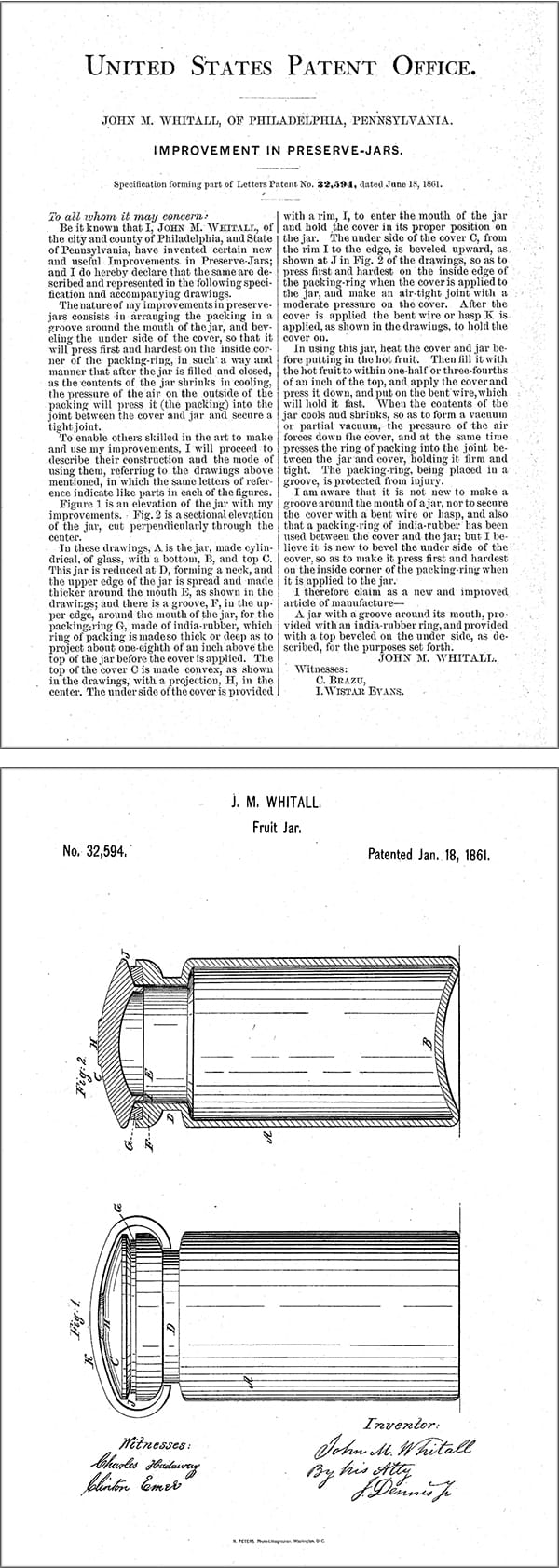
The broader range of Millville Atmospheric jars date from 1861 through the early 1890s, although the Whitall, Tatum Company produced similar museum jars with the same closure at least into the 1920s. Two of their catalog advertisements for the Millville Atmospheric Fruit Jar are below.

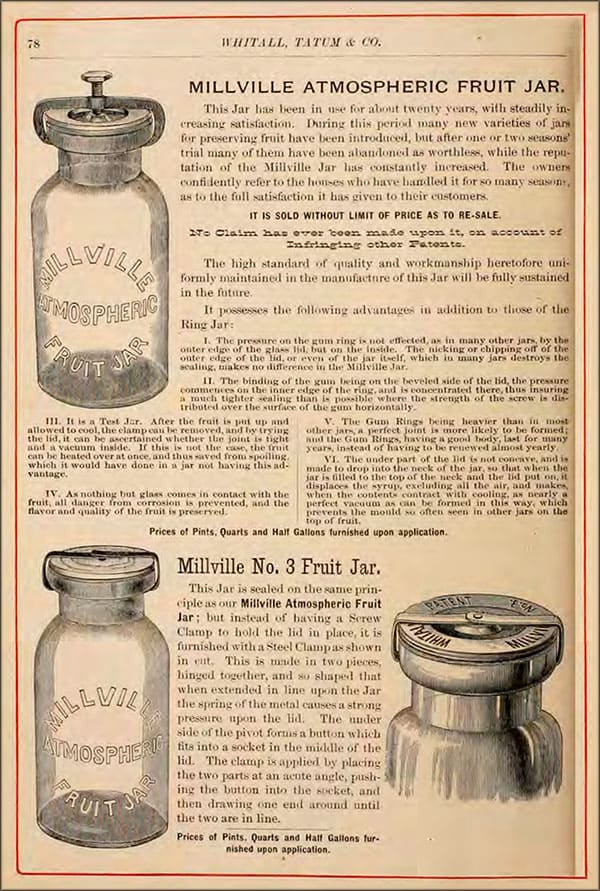
John Mickle Whitall was born on November 4, 1800, in a house on Main Street in Woodbury, Gloucester County, New Jersey. When he was 16 years old, Whitall began a seafaring career as an apprentice on board a ship called the William Savery. His voyages spanned a 13-year period and took him from the port of Philadelphia down to ports in Savannah, Georgia, and Charleston, South Carolina, and then on to ports in Liverpool, India, and China.
When Whitall finished his sailing career in 1829, he had saved $4,000 from his earnings and paid $1,000 to settle a debt his father owed. He put the remainder into the opening of a dry goods and wholesale business that unfortunately failed. This left him in debt to the tune of $105,000 in 1837 and forced him into bankruptcy.
In January 1838, along with his brothers-in-law William Scattergood and G. M. Haversick, Whitall entered the glass manufacturing business as a partner. The company they took over was known as the Phoenix Glass Works located in Millville, New Jersey. The location was ideal for making glass because silica-based sand was plentiful in southern New Jersey. The Maurice River also flowed through Millville providing a source of water, and there were plentiful forests to provide energy for the industrial processes. When Haversick retired from the business, the firm was renamed Scattergood and Whitall.
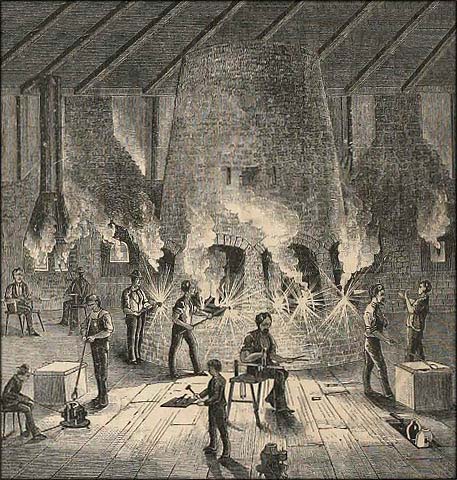
John Whitall’s brother Franklin joined the firm in 1845 and the business was renamed Whitall, Brother, and Company. When Edward Tatum became involved, the firm name changed again to Whitall Tatum & Company. Whitall Tatum & Company produced bottles, fruit jars, insulators, chemical and pharmacy bottles, and perfume bottles of various colors and styles. In 1901, the company name would change to Whitall Tatum Company. They became one of the largest glass-making operations in the United States before closing in 1938.
See the Museum example of a Millville Hitall’s Patent (missing letters) jar
See the museum example of Millville Improved WTCo (Monogram) jar
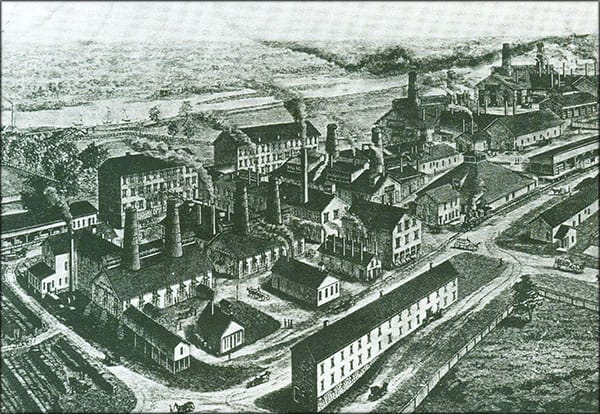
Primary Image: Millville Atmospheric Fruit Jar imaged on location by the FOHBC Virtual Museum midwest studio led by Alan DeMaison.
Support Images: Grouping of eleven (11) Millville Atmospheric Fruit Jars, pair of half-pint aqua Millville Atmospheric jars, and three (3) Millville Atmospheric dome lid jars from the Jeff Vanaman Collection.
Support Images: Millville Atmospheric Fruit Jar half-pint. – Greg Spurgeon and North American Glass.
Support: Reference to The Whitall-Van Sciver House by Sandra White-Grear, Haddon Township Historical Society, William G. Rohrer Memorial Library, Haddon Township, New Jersey, 2004
Support: Reference to The Dating Game: Whitall, Tatum & Co. by Bill Lockhart, Carol Serr, David Whitten, Bill Lindsey, and Pete Schulz, Bottles and Extras, 2006
Support: Reference to Red Book #11, the Collector’s Guide to Old Fruit Jars by Douglas M. Leybourne, Jr.
Support: Reference to Fruit Jar Annual 2020 – The Guide to Collecting Fruit Jars by Jerome J. McCann
Join the FOHBC: The Virtual Museum is a project of the Federation of Historical Bottle Collectors (FOHBC). To become a member.

